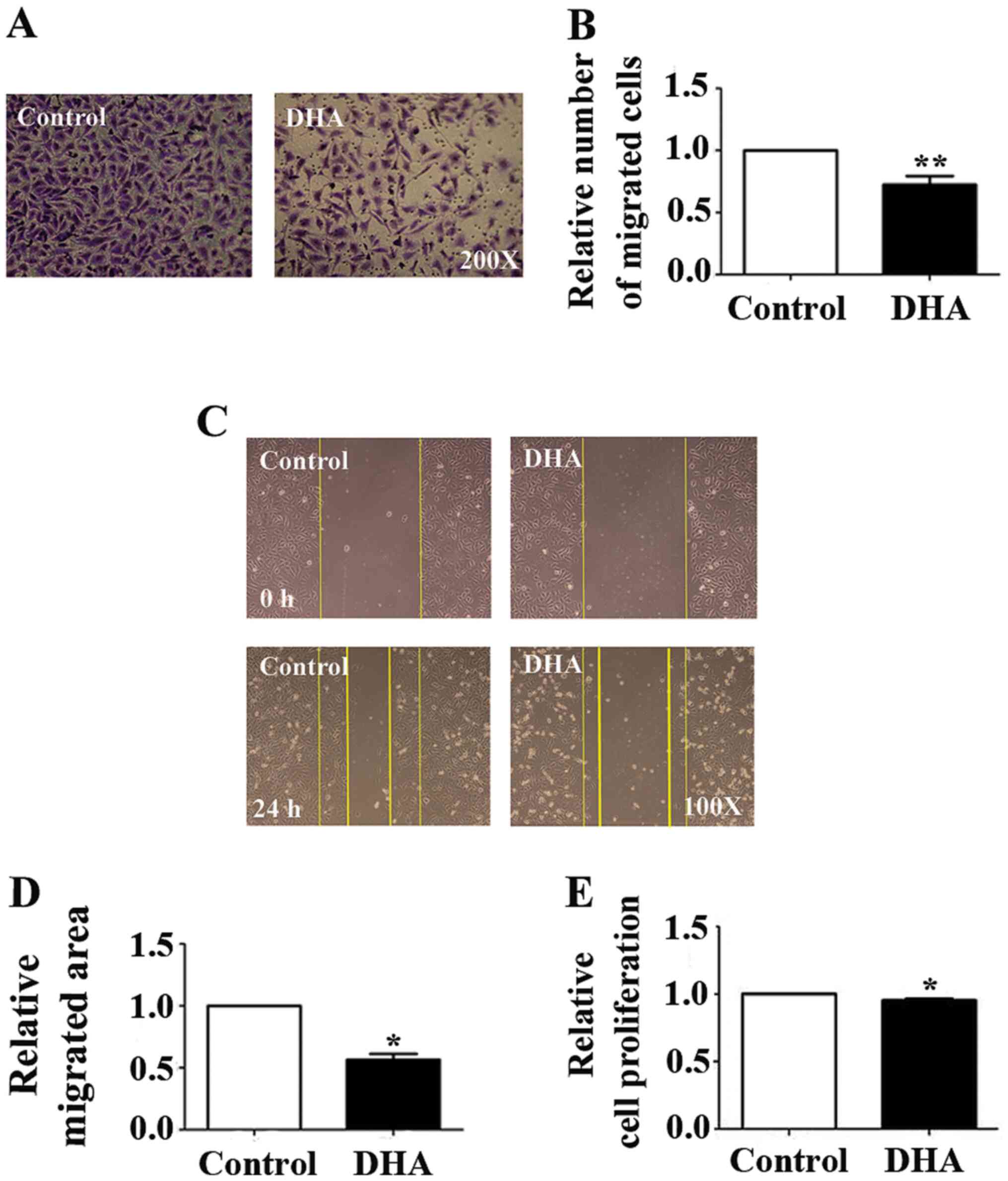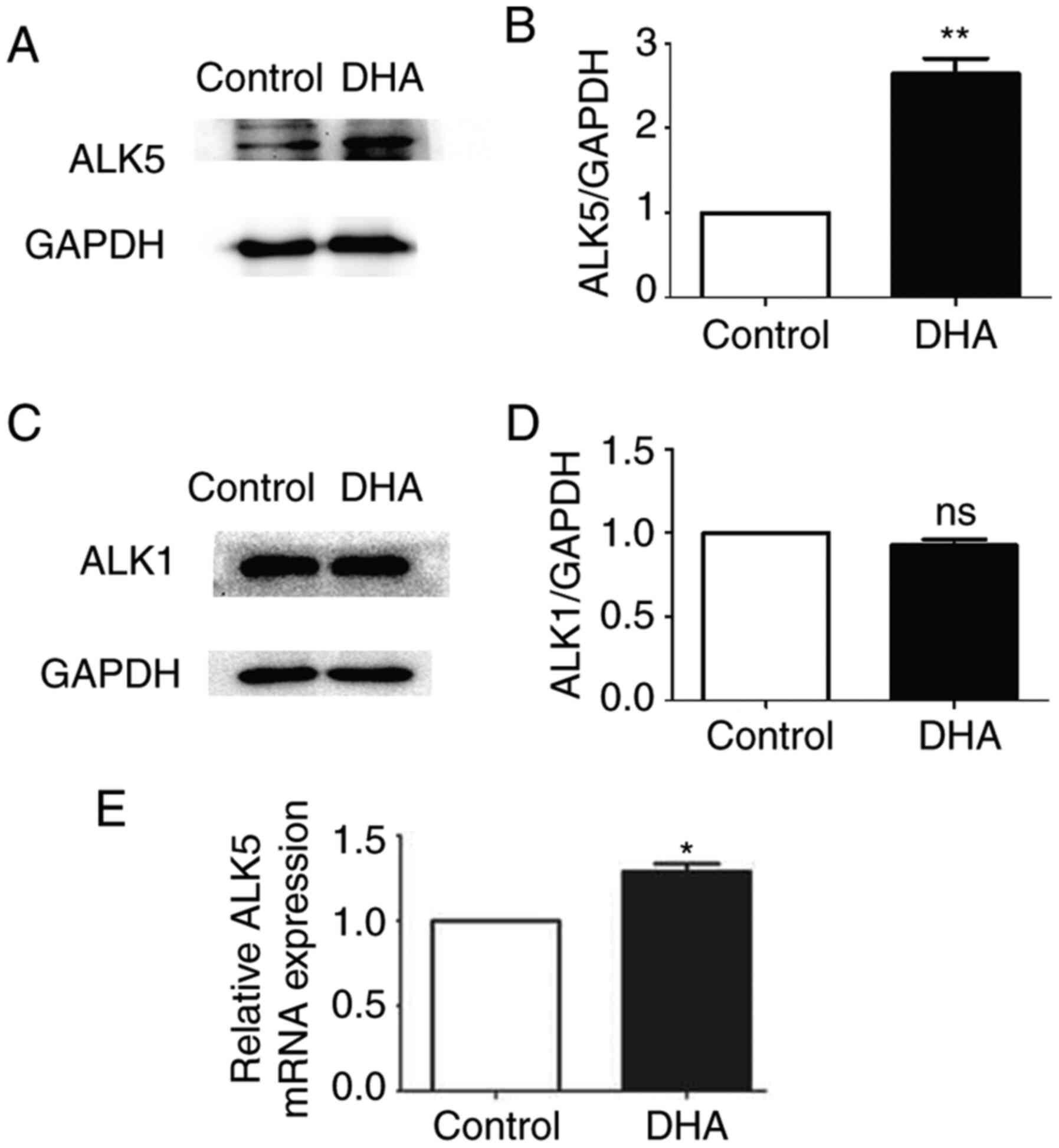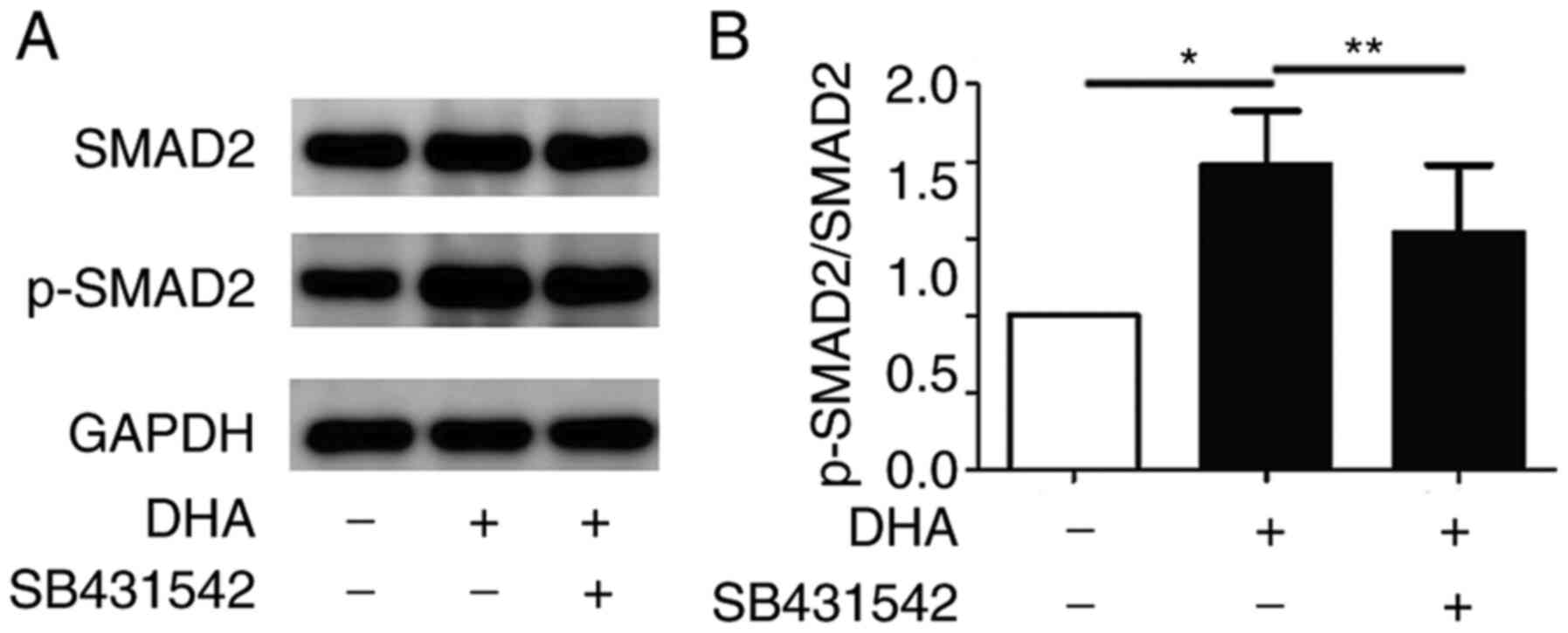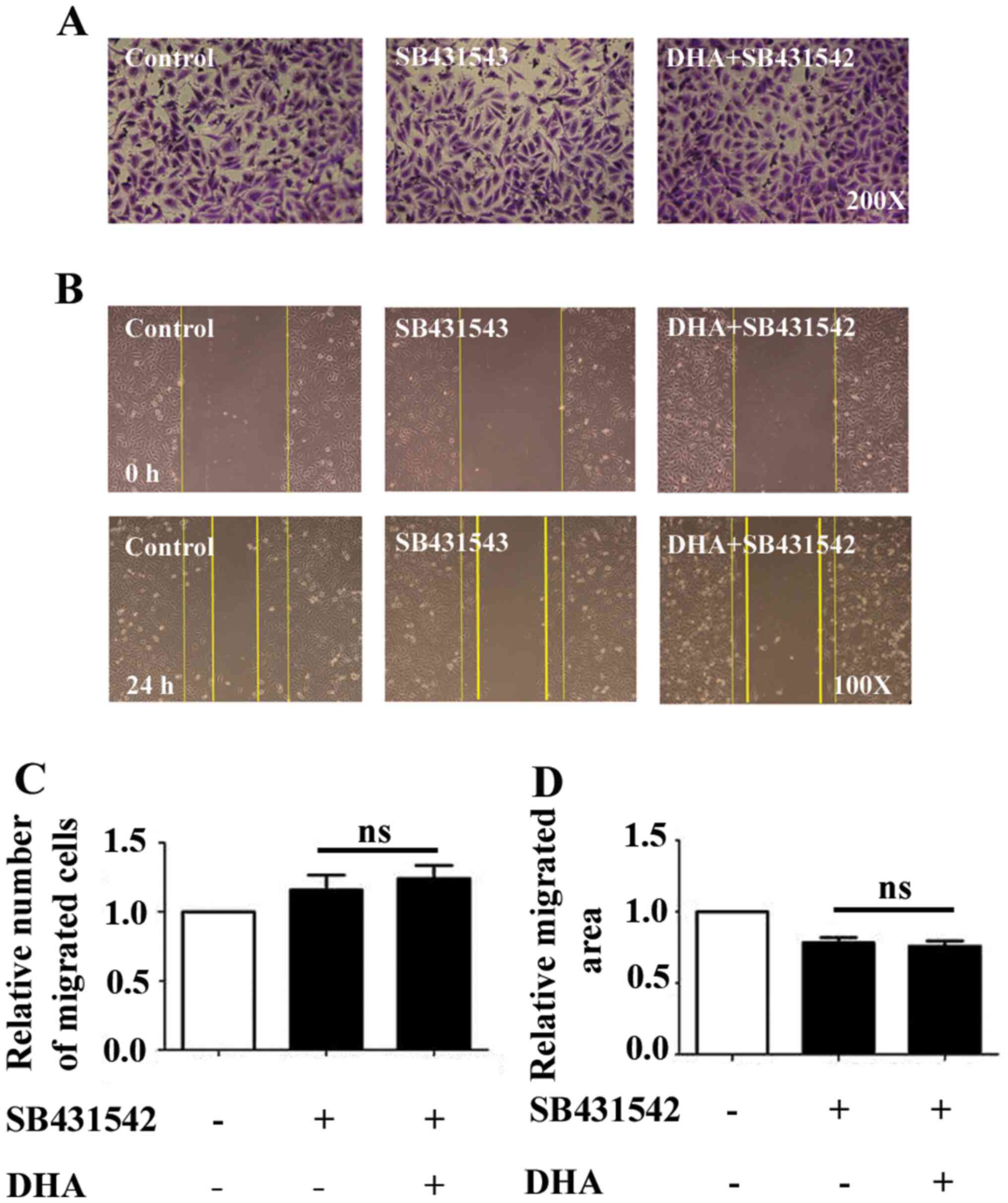|
1
|
Carmeliet P: Mechanisms of angiogenesis
and arteriogenesis. Nat Med. 6:389–395. 2000.PubMed/NCBI View
Article : Google Scholar
|
|
2
|
Knighton DR, Silver IA and Hunt TK:
Regulation of wound-healing angiogenesis-effect of oxygen gradients
and inspired oxygen concentration. Surgery. 90:262–270.
1981.PubMed/NCBI
|
|
3
|
Reynolds LP, Killilea SD and Redmer DA:
Angiogenesis in the female reproductive system. FASEB J. 6:886–892.
1992.PubMed/NCBI
|
|
4
|
Weidner N, Carroll PR, Flax J, Blumenfeld
W and Folkman J: Tumor angiogenesis correlates with metastasis in
invasive prostate carcinoma. Am J Pathol. 143:401–409.
1993.PubMed/NCBI
|
|
5
|
Al-Abd AM, Alamoudi AJ, Abdel-Naim AB,
Neamatallah TA and Ashour OM: Anti-angiogenic agents for the
treatment of solid tumors: Potential pathways, therapy and current
strategies-A review. J Adv Res. 8:591–605. 2017.PubMed/NCBI View Article : Google Scholar
|
|
6
|
Klagsbrun M and Moses MA: Molecular
angiogenesis. Chem Biol. 6:R217–R224. 1999.PubMed/NCBI View Article : Google Scholar
|
|
7
|
Goumans MJ, Valdimarsdottir G, Itoh S,
Rosendahl A, Sideras P and ten Dijke P: Balancing the activation
state of the endothelium via two distinct TGF-beta type I
receptors. EMBO J. 21:1743–1753. 2002.PubMed/NCBI View Article : Google Scholar
|
|
8
|
Crespo-Ortiz MP and Wei MQ: Antitumor
activity of artemisinin and its derivatives: From a well-known
antimalarial agent to a potential anticancer drug. J Biomed
Biotechnol. 2012(247597)2012.PubMed/NCBI View Article : Google Scholar
|
|
9
|
Wei T and Liu J: Anti-angiogenic
properties of artemisinin derivatives (review). Int J Mol Med.
40:972–978. 2017.PubMed/NCBI View Article : Google Scholar
|
|
10
|
Chen HH, Zhou HJ, Wang WQ and Wu GD:
Antimalarial dihydroartemisinin also inhibits angiogenesis. Cancer
Chemother Pharmacol. 53:423–432. 2004.PubMed/NCBI View Article : Google Scholar
|
|
11
|
Pepper MS: Transforming growth
factor-beta: Vasculogenesis, angiogenesis, and vessel wall
integrity. Cytokine Growth Factor Rev. 8:21–43. 1997.PubMed/NCBI View Article : Google Scholar
|
|
12
|
Goumans MJ, Lebrin F and Valdimarsdottir
G: Controlling the angiogenic switch: A balance between two
distinct TGF-b receptor signaling pathways. Trends Cardiovasc Med.
13:301–307. 2003.PubMed/NCBI View Article : Google Scholar
|
|
13
|
Liu Z, Kobayashi K, van Dinther M, van
Heiningen SH, Valdimarsdottir G, van Laar T, Scharpfenecker M,
Löwik CW, Goumans MJ, Ten Dijke P and Pardali E: VEGF and
inhibitors of TGFbeta type-I receptor kinase synergistically
promote blood-vessel formation by inducing alpha5-integrin
expression. J Cell Sci. 122:3294–3302. 2009.PubMed/NCBI View Article : Google Scholar
|
|
14
|
Goumans MJ, Valdimarsdottir G, Itoh S,
Lebrin F, Larsson J, Mummery C, Karlsson S and ten Dijke P: Activin
receptor-like kinase (ALK)1 is an antagonistic mediator of lateral
TGFbeta/ALK5 signaling. Mol Cell. 12:817–828. 2003.PubMed/NCBI View Article : Google Scholar
|
|
15
|
Dong F, Zhou X, Li C, Yan S, Deng X, Cao
Z, Li L, Tang B, Allen TD and Liu J: Dihydroartemisinin targets
VEGFR2 via the NF-κB pathway in endothelial cells to inhibit
angiogenesis. Cancer Biol Ther. 15:1479–1488. 2014.PubMed/NCBI View Article : Google Scholar
|
|
16
|
Martins MD, Silveira FM, Webber LP, Wagner
VP, Martins MAT, Squarize CH and Castilho RM: The impact of
photobiomodulation therapy on the biology and behavior of head and
neck squamous cell carcinomas cell lines. J Photochem Photobiol B.
209(111924)2020.PubMed/NCBI View Article : Google Scholar
|
|
17
|
Guo L, Dong F, Hou Y, Cai W, Zhou X, Huang
AL, Yang M, Allen TD and Liu J: Dihydroartemisinin inhibits
vascular endothelial growth factor-induced endothelial cell
migration by a p38 mitogen-activated protein kinase-independent
pathway. Exp Ther Med. 8:1707–1712. 2014.PubMed/NCBI View Article : Google Scholar
|
|
18
|
Livak KJ and Schmittgen TD: Analysis of
relative gene expression data using real-time quantitative PCR and
the 2(-Delta Delta C(T)) method. Methods. 25:402–408.
2001.PubMed/NCBI View Article : Google Scholar
|
|
19
|
Derynck R, Zhang Y and Feng XH: Smads:
Transcriptional activators of TGF-beta responses. Cell. 95:737–740.
1998.PubMed/NCBI View Article : Google Scholar
|
|
20
|
Hurwitz H, Fehrenbacher L, Novotny W,
Cartwright T, Hainsworth J, Heim W, Berlin J, Baron A, Griffing S,
Holmgren E, et al: Bevacizumab plus irinotecan, fluorouracil, and
leucovorin for metastatic colorectal cancer. N Engl J Med.
350:2335–2342. 2004.PubMed/NCBI View Article : Google Scholar
|
|
21
|
Ilhan-Mutlu A, Osswald M, Liao Y, Gömmel
M, Reck M, Miles D, Mariani P, Gianni L, Lutiger B, Nendel V, et
al: Bevacizumab prevents brain metastases formation in lung
adenocarcinoma. Mol Cancer Ther. 15:702–710. 2016.PubMed/NCBI View Article : Google Scholar
|
|
22
|
Gao P, Wang LL, Liu J, Dong F, Song W,
Liao L, Wang B, Zhang W, Zhou X, Xie Q, et al: Dihydroartemisinin
inhibits endothelial cell tube formation by suppression of the
STAT3 signaling pathway. Life Sci. 242(117221)2020.PubMed/NCBI View Article : Google Scholar
|
|
23
|
Horwitz R and Webb D: Cell migration. Curr
Biol. 13:R756–R759. 2003.PubMed/NCBI View Article : Google Scholar
|
|
24
|
Krzemień S and Knapczyk P: Current review
on the role of transforming growth factor beta (TGF-beta) in some
pathological disorders. Wiad Lek. 58:536–539. 2005.PubMed/NCBI(In Polish).
|
|
25
|
Huang FY, Mei WL, Li YN, Tan GH, Dai HF,
Guo JL, Wang H, Huang YH, Zhao HG, Zhou SL and Lin YY:
Toxicarioside A inhibits tumor growth and angiogenesis: Involvement
of TGF-β/endoglin signaling. PLoS One. 7(e50351)2012.PubMed/NCBI View Article : Google Scholar
|
|
26
|
Kajdaniuk D, Marek B, Borgiel-Marek H and
Kos-Kudła B: Transforming growth factor β1 (TGFβ1) in physiology
and pathology. Endokrynol Pol. 64:384–396. 2013.PubMed/NCBI View Article : Google Scholar
|
|
27
|
Jiang Y, Zhou X, Hu R and Dai A:
TGF-β1-induced SMAD2/3/4 activation promotes RELM-β transcription
to modulate the endothelium-mesenchymal transition in human
endothelial cells. Int J Biochem Cell Biol. 105:52–60.
2018.PubMed/NCBI View Article : Google Scholar
|
|
28
|
Byfield SD and Roberts AB: Lateral
signaling enhances TGF-beta response complexity. Trends Cell Biol.
14:107–111. 2004.PubMed/NCBI View Article : Google Scholar
|
|
29
|
Oh SP, Seki T, Goss KA, Imamura T, Yi Y,
Donahoe PK, Li L, Miyazono K, ten Dijke P, Kim S and Li E: Activin
receptor-like kinase 1 modulates transforming growth factor-beta 1
signaling in the regulation of angiogenesis. Proc Natl Acad Sci
USA. 97:2626–2631. 2000.PubMed/NCBI View Article : Google Scholar
|
|
30
|
Li T, Chen H, Yang Z, Liu XG, Zhang LM and
Wang H: Evaluation of the immunosuppressive activity of artesunate
in vitro and in vivo. Int Immunopharmacol. 16:306–312.
2013.PubMed/NCBI View Article : Google Scholar
|
|
31
|
van Nieuw Amerongen GP, Koolwijk P,
Versteilen A and van Hinsbergh VW: Involvement of RhoA/Rho kinase
signaling in VEGF-induced endothelial cell migration and
angiogenesis in vitro. Arterioscler Thromb Vasc Biol. 23:211–217.
2003.PubMed/NCBI View Article : Google Scholar
|
|
32
|
Qi JH and Claesson-Welsh L: VEGF-induced
activation of phosphoinositide 3-kinase is dependent on focal
adhesion kinase. Exp Cell Res. 263:173–182. 2001.PubMed/NCBI View Article : Google Scholar
|
|
33
|
Lamalice L, Le Boeuf F and Huot J:
Endothelial cell migration during angiogenesis. Circ Res.
100:782–794. 2007.PubMed/NCBI View Article : Google Scholar
|
|
34
|
Gong C, Stoletov KV and Terman BI: VEGF
treatment induces signaling pathways that regulate both actin
polymerization and depolymerization. Angiogenesis. 7:313–321.
2004.PubMed/NCBI View Article : Google Scholar
|
|
35
|
Liu J, Wada Y, Katsura M, Tozawa H, Erwin
N, Kapron CM, Bao G and Liu J: Rho-associated coiled-coil kinase
(ROCK) in molecular regulation of angiogenesis. Theranostics.
8:6053–6069. 2018.PubMed/NCBI View Article : Google Scholar
|
|
36
|
Castañares C, Redondo-Horcajo M,
Magán-Marchal N, ten Dijke P, Lamas S and Rodriguez-Pascual F:
Signaling by ALK5 mediates TGF-beta-induced ET-1 expression in
endothelial cells: A role for migration and proliferation. J Cell
Sci. 120:1256–1266. 2007.PubMed/NCBI View Article : Google Scholar
|


















